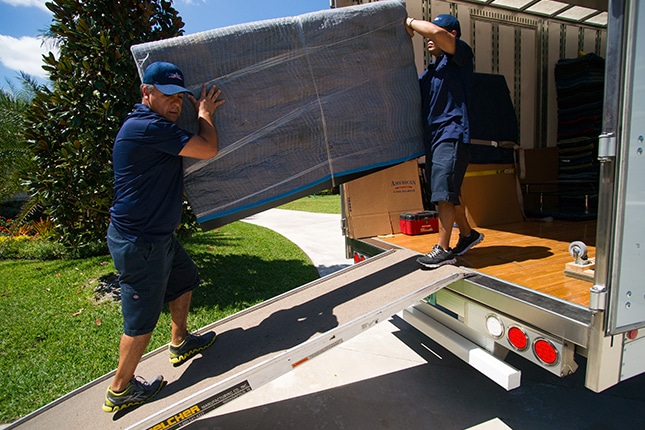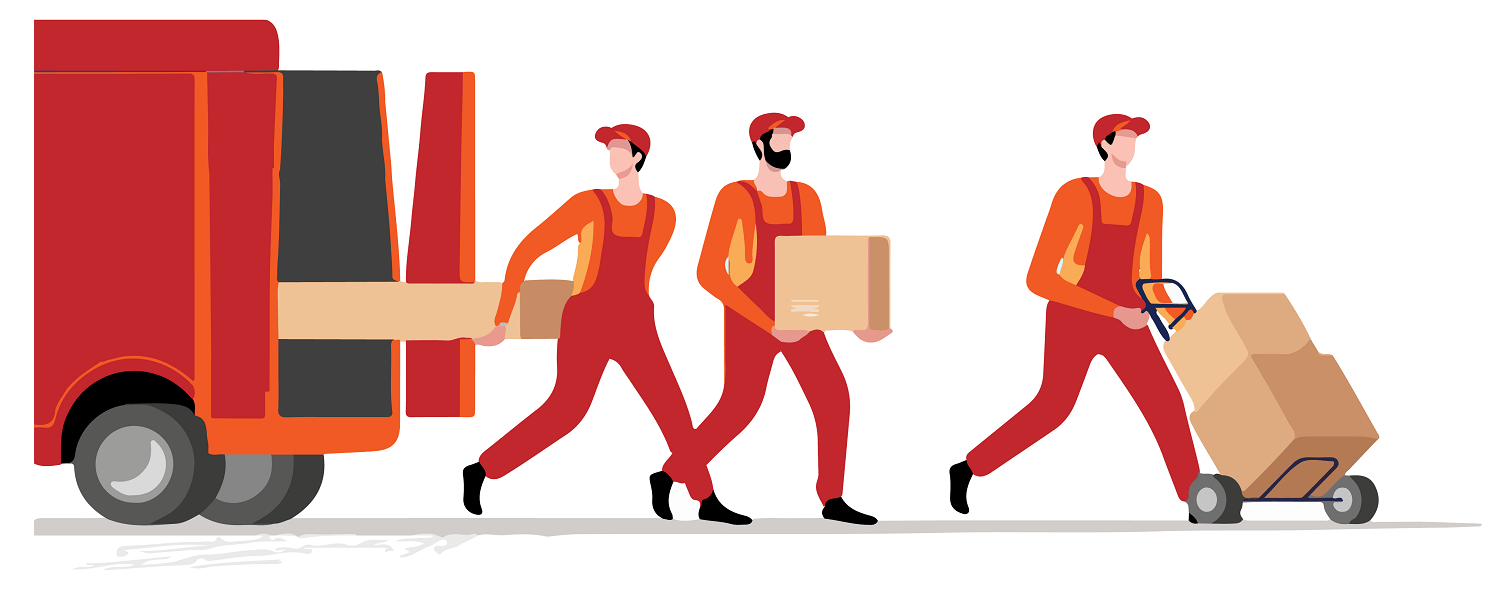Interstate Movers: Expert Relocation Professionals Can Assist Make Your Shift Smooth And Hassle-free
History and Development of Moving Services
The Dawn of Moving: From Muscle to Devices
Image this: a handful of strong guys carrying heavy trunks on wood carts, navigating cobblestone streets with sweat and decision. Before the modern moving industry took shape, moving was a harsh, labor-intensive task. In ancient times, relocation often implied counting on large physical strength and basic tools. The lack of specialized services indicated households and merchants needed to coordinate every detail themselves, frequently running the risk of damage or loss.
Isn't it interesting how necessity fuels development? As cities expanded and commerce flourished, the requirement for efficient, dependable moving solutions ended up being glaringly apparent. Enter the age of horse-drawn wagons and later on, motorized automobiles, which reinvented how belongings took a trip from one location to another.
Industrial Transformation: The Driver for Modification
The 19th century's industrial boom improved lots of aspects of life, consisting of how people moved. Suddenly, urban migration rose, and with it, the need for expert movers increased. No longer was moving an easy chore; it progressed into a specialized service offering:
- Packaging expertise to safeguard vulnerable items
- Organized packing techniques making the most of space
- Transport options tailored to different ranges
This duration marked the birth of companies dedicated exclusively to moving, laying the foundation for today's complex logistics and customer-centric methods.
Technological Developments and Their Effect
Can you think of moving without contemporary devices? The introduction of hydraulic lifts, forklifts, and pallet jacks transformed the market overnight. All of a sudden, movers might handle large furnishings and heavy devices with ease, lowering injuries and enhancing performance.
Additionally, the integration of digital innovation sparked a brand-new wave of development. GPS tracking, online booking platforms, and real-time inventory management have actually become staples in the moving services landscape. These tools not just boost openness but likewise empower consumers to remain connected and notified throughout their moving journey.
Key Milestones in Moving Provider Development
| Period | Development | Significance |
|---|---|---|
| Ancient Times | Manual labor and basic carts | Structure of moving as a need |
| 19th Century | Horse-drawn wagons and packing services | Birth of expert moving business |
| 20th Century | Motorized trucks and mechanized equipment | Increased efficiency and scale |
| 21st Century | Digital integration and GPS technology | Improved client experience and logistics |
Reflections on the Journey
Showing on the development of movers, one might wonder: how did a simple act of transporting belongings end up being a sophisticated market? It's a tale of resilience, adaptation, and constant enhancement. From the sweat-soaked streets of old to the precision-driven operations of today, the history of moving services is as vibrant as individuals who depend on them.
Next time you pack a box or hire a mover, consider the layers of history embedded in every step. The journey of movers encapsulates human resourcefulness, transforming what was once a complicated task into a smooth experience.
Checking out the Spectrum of Moving Providers
When the time concerns move your life from one address to another, the variety of moving services offered can feel like navigating a labyrinth. Do you need an easy loading and unloading team, or does your move need the finesse of full packaging and unpacking? Comprehending the subtleties can save hours of aggravation and unanticipated costs.
Typical Types of Moving Services
- Local Relocations: Created for relocations within a city or urbane location, these services normally run on a per hour basis, perfect for brief distances.
- Long-Distance Moves: Covering moves beyond 100 miles, these need more coordination, from logistical planning to protect transport, typically priced by weight and distance.
- Full-Service Moves: Movers handle everything-- packaging, packing, transferring, dumping, and often even unloading. Perfect for those pressed for time or energy.
- Self-Service Relocations: You load and fill your personal belongings, while the company handles transportation and discharging. A happy medium offering cost savings and some benefit.
- Specialized Relocations: For vulnerable, large, or important items like pianos, antiques, or art work, requiring specific devices and expertise.
Expert Tips to Browse Your Moving Service Choices
- Focus on Flexibility: Choose a service that adapts to unanticipated hold-ups or last-minute changes-- stiff schedules can turn a smooth relocation into a logistical headache.
- Inspect Insurance Coverage Options: Not all moving companies offer the very same level of security. Understanding your coverage can avoid distress if something goes awry.
- Demand Detailed Inventories: A precise item list prevents disputes and makes sure responsibility, especially when dealing with long-distance or specialty moves.
- Consider Time of Year: Seasonal demand can affect availability and prices. Early scheduling throughout off-peak seasons may grant better service and flexibility.
- Inquire About Packing Products: High-quality boxes, bubble wrap, and padding can be the difference between a scratched heirloom and a pristine arrival.
Table: Service Features Compared
| Service Type | Who Packs? | Transportation Mode | Normal Rates Design | Suitable For |
|---|---|---|---|---|
| Regional Move | Client or Movers | Truck | Hourly | Brief ranges, small loads |
| Long-Distance Move | Movers | Truck or Container | Weight & & Distance | Cross-state or regional relocation |
| Full-Service Move | Movers | Truck | Flat or Weight-Based | Time-sensitive, high-stress moves |
| Self-Service Move | Customer | Truck or Container | Flat or Hourly | Cost-conscious, hands-on movers |
| Specialized Move | Movers with know-how | Specialized Devices | Custom Quote | Delicate or important items |
The Unseen Complexity Behind Each Choice
Have you ever wondered why moving appears simple and easy on television however develops into a waterfall of last-minute choices in reality? The reality depends on the complexities of each service type. For example, full-service moves may appear like a high-end, but the proficiency associated with packing fragile treasures or dismantling large furnishings is a craft refined over years. Meanwhile, selecting a self-service relocation might conserve money, however it demands a keen understanding of how to pack effectively-- did you know that stacking unusually shaped boxes improperly can trigger internal moving throughout transit, damaging delicate contents?
Choosing the best kind of moving service is not practically benefit-- it's about safeguarding your memories and investments. What's your relocation's story going to be?

Packing and Moving Methods
Ever tried to fit a travel suitcase that simply won't close? That's the kind of puzzle professional movers resolve daily-- however on a much larger scale. The secret lies not in brute force however in tactical positioning and smart usage of area. Packaging isn't simply about packing products into boxes; it's an art type where every inch counts.
Layering for Success
Picture a painter layering colors to create depth. When packing, start with much heavier products at the bottom, then cushion with softer products like bubble wrap or towels. This prevents damage and optimizes box stability. Oddly formed items can slip into gaps, decreasing squandered area.
- Wrap delicate products individually with tissue or foam to avoid scratches.
- Use clothing as cushioning-- it's both efficient and eco-friendly.
- Fill voids with packaging peanuts or crumpled paper to lessen motion.
Identifying: The Unsung Hero

What great is best packaging if you invest hours searching through boxes? In-depth labeling is a game-changer. Rather of unclear tags like "Kitchen," attempt this approach:
| Label | Description | Concern |
|---|---|---|
| Fragile - Glassware | Manage with care, includes delicate products | High |
| Essentials - First Night | Products required instantly after moving | Urgent |
| Books - Study Space | Stacked, heavy books | Medium |
Strategic Packaging Tips
- Dismantle big furnishings and keep screws in labeled bags taped to the pieces.
- Use uniform box sizes when possible-- stacking ends up being simpler and much safer.
- Do not overpack boxes; weight limitations exist for a reason. Goal for 40-50 pounds max.
- Wrap furniture edges with moving blankets to prevent scratches during transit.
- Seal boxes with high-quality packing tape-- double layers on the bottom are necessary.
Why do some movers swear by a color-coded system? Because it removes guesswork on moving day. Appoint each space a color and mark boxes accordingly. This small action can conserve hours when discharging and unpacking.
Packing and moving demand precision-- like a chess video game where every move counts. Have you ever observed how some movers deal with bulky products effortlessly? They leverage angles and pivot indicate navigate tight corners without damage. It's not muscle; it's technique.
Unseen Battles Behind the Moving Van Doors
Ever watched a group of expert movers bring a grand piano through a narrow doorway and questioned how they pull it off without a scratch? The art of moving isn't simply muscle and trucks; it's a fragile dance with unpredictability. Weather condition can flip from a sunlit true blessing to a torrential threat in minutes, turning a straightforward drive into a logistical labyrinth.
One infamous obstacle is the labyrinthine layout of some homes or apartment or condos. Staircases too tight for dollies, entrances narrower than standard boxes, or elevators that barely fit a sofa-- these physical peculiarities require inventive options on the area. Movers frequently resort to unconventional strategies like dismantling furniture or using personalized cushioning to secure both the item and the residential or commercial here property.
Accuracy Packaging: More Than Simply Covering
It's appealing to think packaging is merely stuffing boxes, but the truth is a complicated puzzle of weight distribution and fragility. Movers must prepare for how items will move throughout transit-- a mistake can mean shattered treasures or dented home appliances. The secret weapon? Strategic layering and using materials with specific shock-absorbing qualities.
- Bubble wrap is standard, however rotating it with foam sheets can considerably minimize impact damage.
- Heavy products go at the bottom; fragile ones nestle on top, cushioned by soft textiles.
- Identifying boxes not just by contents but by managing instructions makes sure quicker, more secure unloading.
Another less spoke about pressure is the psychological toll. The clock ticks non-stop, and every hold-up ripples through tight schedules. Staying calm in the middle of disorderly last-minute modifications requires mental agility and group synergy.
Traffic Congestion and Timing: The Undetectable Challengers
| Obstacle | Expert Method | Impact |
|---|---|---|
| Urban congestion | Route optimization apps and flexible scheduling | Lessens hold-ups and fuel intake |
| Parking limitations | Pre-arranged permits or strategic parking nearby | Avoids fines and time loss |
| Unpredictable weather | Water resistant coverings and contingency strategies | Preserves the condition of goods and equipment |
Do you truly understand what it requires to keep a moving day on track? It's not practically strength or stamina; it's about foresight, adaptability, and a deep understanding of every piece of the puzzle. The next time you see movers at work, remember: behind that smooth operation lies a series of calculated maneuvers and quick thinking that couple of ever notice.